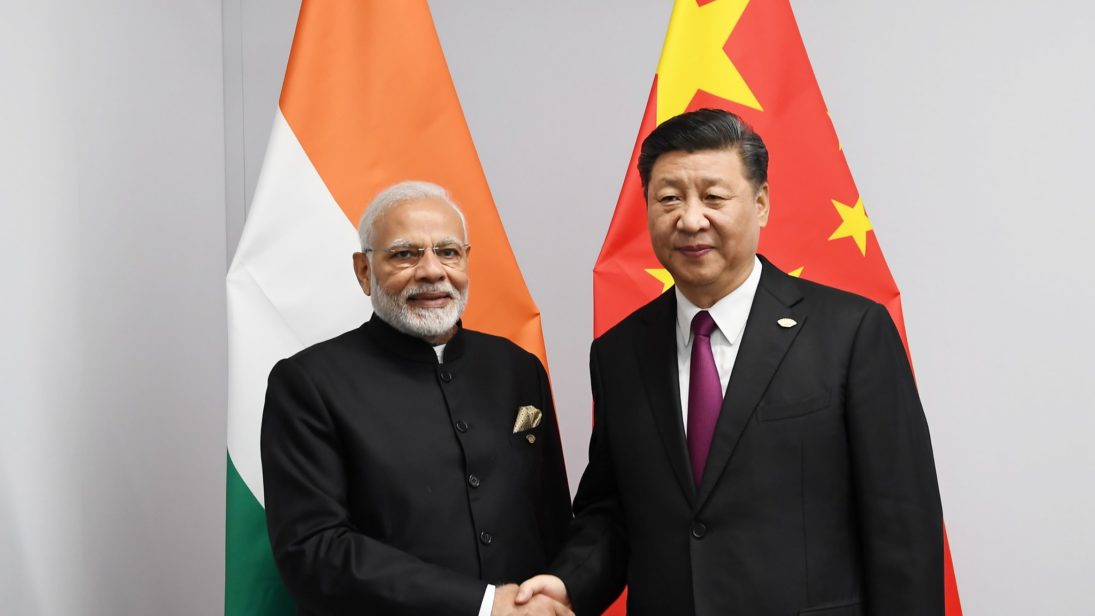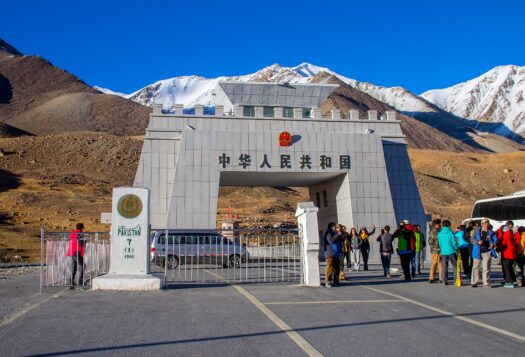
India’s trade deficit with China, an element of the bilateral relationship that inspires substantial animosity in New Delhi, is stirring up a controversy yet again. Despite a USD $1.9 billion reduction in the bilateral trade deficit in 2018, during the same time period India’s USD $3.9 billion surplus with Hong Kong turned into a USD $2.7 billion deficit, giving rise to widespread speculation that mainland China is using the island of Hong Kong as a conduit to continue exporting to India without attracting New Delhi’s ire. While there appears to be some merit to this argument, it is observably limited to certain cases. This article seeks to counter popular myths about the India-China trade relationship, and encourage policymakers in New Delhi to measure their perceptions accordingly.
Rereading the Numbers
Recontextualizing these trade fluctuations can help elucidate the true health of India and China’s trade relationship. When mainland China and Hong Kong are counted together, the India-China trade deficit did increase to USD $60.1 billion in 2018. Is China really rerouting its exports to India through Hong Kong to avoid conflict with New Delhi, and how much does this reflect the health of India-China trade relations?
The problem of the bilateral trade deficitwith China in 2018 has been exaggerated because, for the most prominent items,“rerouting” through Hong Kong did not offset the reduction in imports from themainland in absolute terms. For many commodities thedecrease in imports from China was much larger than the increase from Hong Kong– rendering a total drop in imports of these commodities. For example, eventhough electronics spares imports (consistinglargely of spares for wireless and wired telecom equipment, LCD screensfor mobile phones and laptops, etc.) from Hong Kong grew by a factor of seven in 2018 compared to the previous year,India still imported 14.14% fewer mobile spares from China and Hong Kong whencombined. In the case of mobile phones, totalimports fell by a whopping 57.72% despite a 1,124.31% increase in imports from Hong Kong. Likewise, in the case of printedcircuit boards, imports have fallen 21.06% percent even though the Hong Kongfigures recorded a 173.16% increase. Assuch, trade figures of these commodities do not support the reroutinghypothesis – they are, in fact, applying downward pressure on the aggregatedeficit despite Hong Kong’s increased role.
To be sure, theargument that the Chinese government is attempting toreroute exports through Hong Kong can appear more valid when examiningIndia’s import data for memory cards and personal computers. Indian imports ofmemory cards from Hong Kong shot up 6,499.7%and now stand at 3.5 times more than those from the mainland — a third of theirrespective value in 2017. Similarly, a 5,309.85% increase in computer imports from Hong Kong offset a drop in China’sfigures, resulting in a 7.41% effective growth. However, this is likelyattributable to manufacturing companies movingout of mainland China due to high wages and American tariffs rather thanattempts of the Chinese government to manipulate trade data.
Even so, these increases have been negated by the drop in imports of the prominent commodities mentioned previously. Per Ministry of Commerce data, the USD $60.1 billion deficit with China (including Hong Kong) is not much larger than the USD $59.4 billion figure for 2017 when Hong Kong was excluded. Simply put, the rerouting of exports through Hong Kong in 2018 was limited to certain sectors and was effectively offset by a drop in imports of prominent items from China. Therefore, in terms of aggregate value, India’s position vis-a-vis her trade deficit with China in 2018 did not shift much compared to the previous year – the change is primarily in terms of composition.
Contextualizing the Data
Analyzing trade values without first contextualizing the data tells us little. It is not the imbalanced figures themselves, but rather an overall dependence on Chinese goods that is germane to the health of India’s political economy.
An error commonly encountered in Indian discourse on the trade deficit with China is an over-emphasis on the import and deficit value. A widening bilateral trade deficit does not solely accrue as the result of unfair trade practices of the partner in question. A major driving force behind the aggregate trade deficit is an economy’s domestic macroeconomic fundamentals. India is a consumption-oriented economy which saves and invests less (relative to consumption) and, thus, tends to import more than it can produce for export. A rise in the value of the bilateral deficit, therefore, is partially a result of the fact that India’s savings rate has been falling consistently since 2010.
A better proxy forunfair trade practices is a partner’s share in a country’stotal imports – an inordinately high share is more indicative ofanti-competitive practices and dumping tendencies.Therefore, the question for Indian policymakers to consider is whether and howmuch China is overrepresented in its total imports. Analyzing trade valueswithout first contextualizing the data tells us little. It is not theimbalanced figures themselves, but rather an overall dependence on Chinesegoods that is germane to the health of India’s political economy.
Examining imports fromChina – including Hong Kong – as a percentage of India’s total imports isuseful for revealing the full picture. In 2018, India undeniably remaineddependent on China for big ticket imports, such as memorycards, chips (integrated circuits) and electronics spares (inclusive ofhandsets, telecom equipment and components of these). Accordingto calculations made using data from the Ministry ofCommerce, for the 12 import items for which import volumes measured above USD$1 billion in 2018, the average dependence rate (i.e. the average of China’sshare in total Indian imports for each of these commodities) was 60.91%, withseven of these items (mostly electronic goods) displaying rates above 75%. Assuch, China plays an inordinately large role in supplying India with big ticketimports, rendering India dependent on Chinese producers.
Interestingly, however, out of these 12 big ticket items, dependency from 2017 to 2018 dropped for nine at an average of 7%. These goods account for roughly 29.17% of India’s total imports from China (including Hong Kong), meaning this reduction is spanning a large portion of the import relationship. This, in turn, means that despite a nominal increase in the bilateral deficit, India’s dependence on trade with China modestly went down in 2018. The alarm surrounding increases in the deficit values does not sufficiently take stock of this reality. Interestingly, six out of these nine items dropped in dependency despite meteoric increases in imports of those same items from Hong Kong.
Source: Author’s calculations using data from Ministry of Commerce, Government of India
Finding Meaning in the Numbers
While policymakers should take full stock of China’s limited rerouting of exports through Hong Kong, the overall significance of these changes may not be as threatening as many assume.
These data indicatethat India has grown less, not more, dependent on China for certain prominentimports as it grows its trade volume with the rest of the world. Meanwhile, inthe case of other commodities such as chips and memory cards, dependence onChina has increased dramatically. Growth in trade with Hong Kong has played anotable role in this increase.
Simply put, adiversification in imports, albeit modest, is underway, but Indian policymakersshould investigate the causes behind these conflicting realities and optimizepolicy to reduce dependency on China for crucial high-tech commodities and explorealternative sources. Over time, this will improve the Indian economy’sresilience to economic shocks in China and allay geopolitical qualms byintroducing more symmetry in the India-China bilateral relationship.
India’s situation is not as grim as is being reported. Her trade position vis-a-vis China in 2018 was mixed both in terms of import values and economic dependency. While policymakers should take full stock of China’s limited rerouting of exports through Hong Kong, the overall significance of these changes may not be as threatening as many assume.
***
Image: MEAPhotogallery via Flickr


